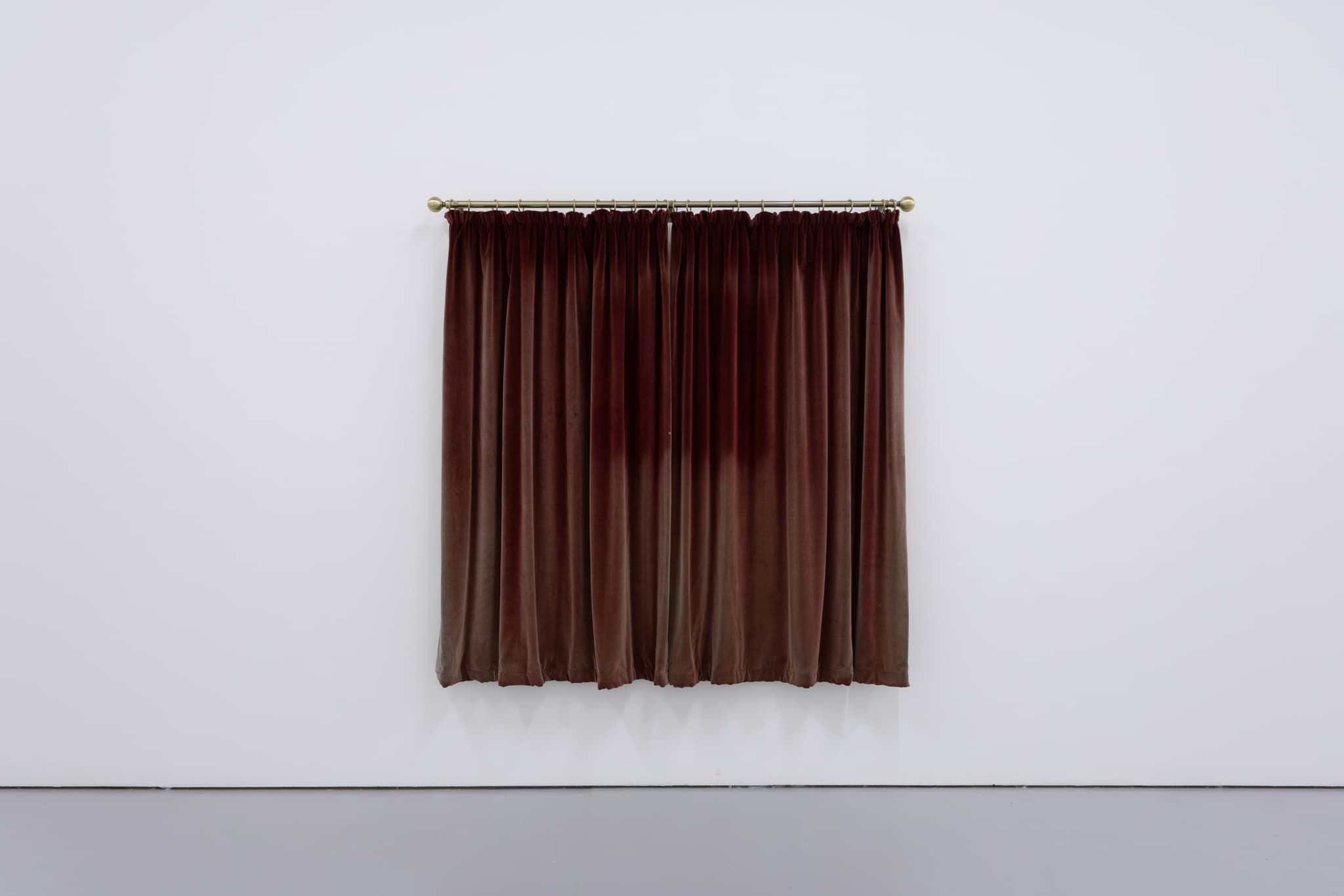Grey Unpleasant Land review: the 240 chamber pots bought on eBay now have interesting company
November 2024

When the centrepieces of this exhibition arrived two weeks after the opening, they hardly seemed like works of art at all. They comprised a pair of wooden chests full of Georgian silver, which until recently belonged to the 9th Baronet Bellingham. Emails printed and pinned to the gallery walls reveal that the dinner service was obtained through a complex negotiation between the show’s artists, Sophia Al-Maria and Lydia Ourahmane, and the Bellingham family trust at NatWest.
According to Al-Maria, a friend of Bellingham’s, the childless peer was eager to dispose of his birthright, which had become an emotional burden. Some of that load now rests at Bristol’s Spike Island gallery alongside a different kind of inheritance: 240 chamber pots the artists bought on eBay from Graham Randles, the son of pub-owning antique collectors. The unassuming diptych, with its utensils for either end of the digestive process, nods to how property of different classes moves through the market’s belly.
Since Marcel Duchamp stuck a urinal on a pedestal in 1917 and called it Fountain, the “readymade” has induced many people to scratch their heads. This starkly presented exhibition, filled with objects mostly left as the artists found them, is likely to impart a similar impression. Nevertheless, it rewards a bit of detective work, like hunting for bargains at a recently deceased person’s estate sale.
Around the bend from Randles’s pots, a set of sun-bleached red velvet curtains are described as having been acquired from the 2020 clearance of 44 Kinnerton Street, Belgravia. A Google search will tell you that the house belonged to Ghislaine Maxwell, convicted associate of sex trafficker Jeffrey Epstein. It’s understandable why the artists chose not to name her, though without the extra effort, the drapes are a mysterious stage prop. Throughout, the show poses questions about how objects accrue value and meaning, which often comes down to how much or how little they’re framed.
Maxwell is very much the elephant in the room alongside items from the same class as the person she set up with underage girls. Nearby, an advert Al-Maria and Ourahmane placed in an issue of the Spectator from September 2024 seeks “English landowners burdened by carrying costs to participate in an endeavour of artistic significance”. The project’s name, Terra Nullius (“nobody’s land”), was used to support the British crown’s claim over its colonies.
A telephone number on the advert (a landline, naturally) routes to Spike Island’s front desk, where a receptionist invites beleaguered gentry to de-title their estates. It’s pure fantasy, since law requires land to have an owner. Still, Al-Maria and Ourahmane bring the concept home to the seat of empire – even sneaking it into a conservative magazine – to imagine reversing Britain’s enclosure of its public lands. In this case, loose jurisprudence is good art. (Apart from a few curious callers, so far no offers have been made.)
All this amounts to a rather dismal view of the Grey Unpleasant Land of the show’s title, an irreverent play on that “green and pleasant” England described by William Blake in his 1810 poem turned nationalist anthem, And did those feet in ancient time. Al-Maria, who was raised between the US and Qatar, and Ourahmane, who was born in Algeria, have both called the UK home off and on for more than two decades. They’re keenly perceptive of both the hostility with which the UK immigration system treats those who look like them, and the stubborn persistence of hereditary wealth. At its best, their show indicts the arbitrary inheritance of money and power, what Shakespeare’s Richard II bemoans as a “hollow crown”.
Naturally, there’s a hollow crown on display here, too: the empty bottom half of a gilded frame that until recently held the Wilton Diptych, a bit of royal propaganda commissioned by none other than Richard II. The National Gallery loaned Al-Maria and Ourahmane the frame while the painting, which depicts the medieval king with a host of angels, undergoes restoration.
In Bristol, the artists have dubbed the wooden armature Framing Device – boringly literal, perhaps, but also a reference to the tools that buttress claims to power, royal or otherwise. Museums have always been places where powerful people try to shape the cultural narrative, and in flipping the script, Al-Maria and Ourahmane implicate themselves. Without framing devices, none of these objects would be considered art in the first place. Criticising an institution from within is always a fraught job for artists, and these two aren’t afraid to bite the hand that feeds.
At a certain point, the show starts to feel like a Trojan horse. Infiltration seems apt for two artists whose own works have often addressed the complications of borders and belonging. Their brand of critique joins a long legacy of institutional malcontents that includes such artists as Hans Haackeand Cameron Rowland.
At Spike Island, it finds a ready target: a Britain still reeling from the results of the Brexit referendum and a dire cost of living crisis. Sure, inequality won’t be unmade by readymades – but Al-Maria and Ourahamane’s use of the form invites us to imagine this country as less divided between those born with silver spoons in their mouths and those born without pots to piss in.